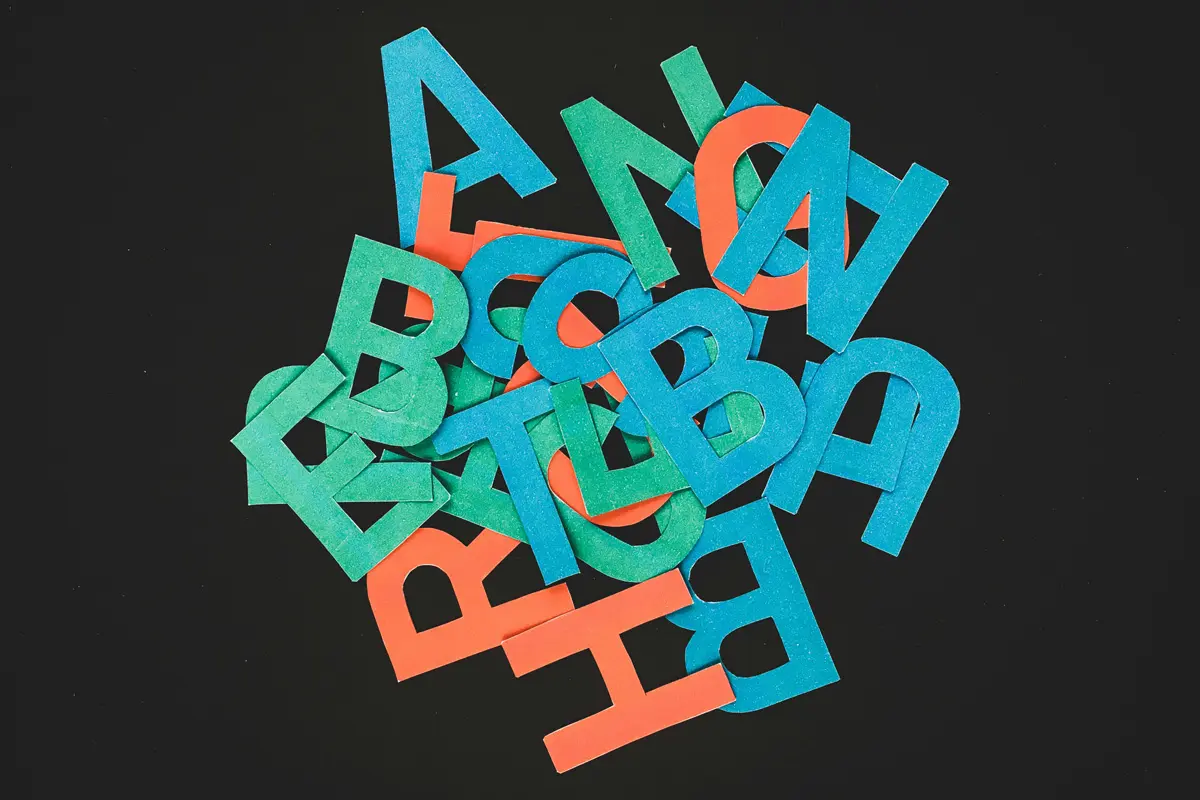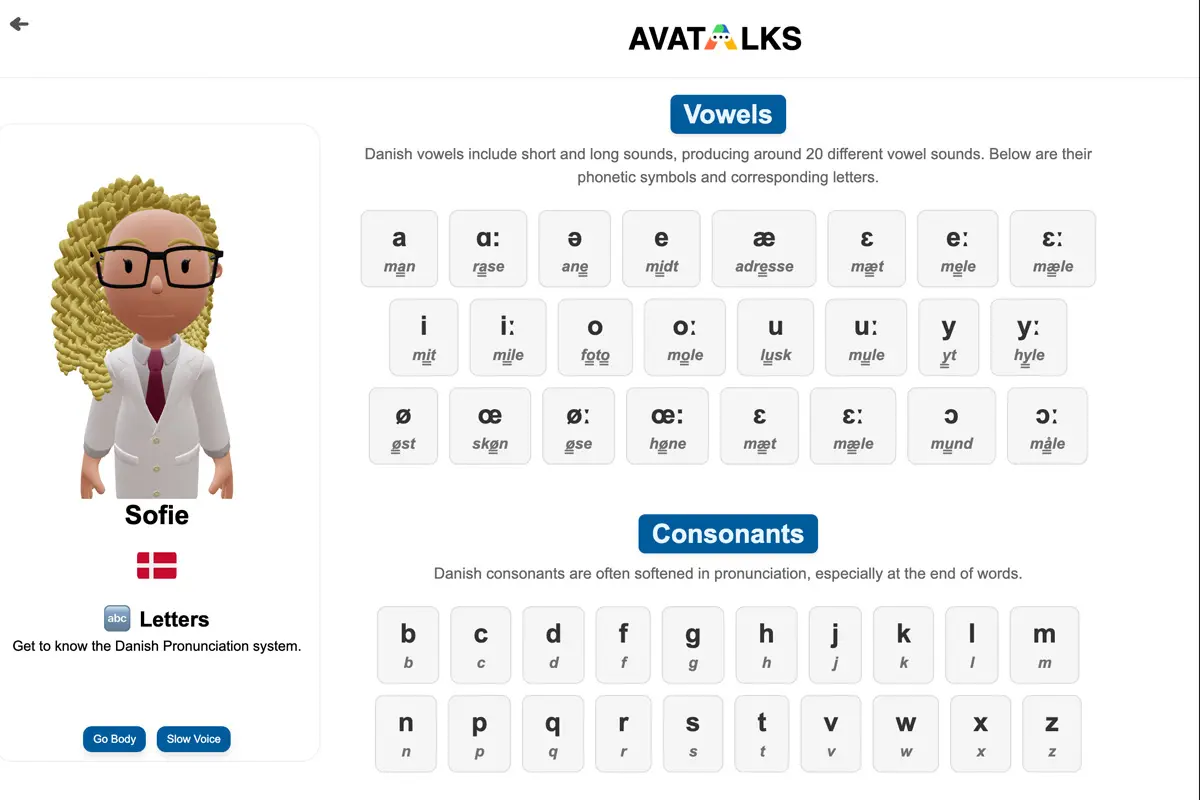
Photo by Matthias Heyde on Unsplash
The Danish alphabet is charming, efficient, and full of surprises. Whether you’re learning for fun, travel, or culture—understanding the alphabet is your first big step toward Danish fluency.
What Is the Danish Alphabet?
The Danish alphabet is based on the Latin script and includes 29 letters—just like in other Scandinavian languages. It shares the 26 standard English letters but adds three special characters: Æ, Ø, and Å.
Here’s the full lineup:
A B C D E F G H I J K L M N O P Q R S T U V W X Y Z Æ Ø Å
Those last three might look unfamiliar—but they’re essential to Danish and give the language its unique flair.
Pronunciation Guide to the Danish Alphabet
| Letter | Danish Pronunciation | English Approximation |
|---|---|---|
| A | /ɑ/ | ’a’ in “father” |
| B | /beː/ | ‘b’ in “bed” |
| C | /seː/ | ‘s’ or ‘k’ in “center” or “cold” |
| D | /deː/ | ‘d’ in “dog” (soft at times) |
| E | /e/ | ‘e’ in “met” or “hey” |
| F | /ef/ | ‘f’ in “fish” |
| G | /geː/ | ‘g’ in “go” (softened after vowels) |
| H | /hɔ/ | ‘h’ in “hat” |
| I | /i/ | ‘ee’ in “see” |
| J | /jɔ/ | ‘y’ in “yes” |
| K | /kɔ/ | ‘k’ in “kite” |
| L | /el/ | ‘l’ in “like” |
| M | /em/ | ‘m’ in “man” |
| N | /en/ | ‘n’ in “nice” |
| O | /o/ | ‘o’ in “cold” |
| P | /peː/ | ‘p’ in “pen” |
| Q | /ku/ | Used only in foreign words |
| R | /ʁ/ | Throaty ‘r’ (French-style) |
| S | /es/ | ‘s’ in “sea” |
| T | /teː/ | ‘t’ in “top” |
| U | /u/ | ‘oo’ in “boot” |
| V | /veː/ | ‘v’ in “vet” |
| W | /dɔbleːveː/ | ‘v’ in loanwords |
| X | /eks/ | ‘ks’ as in “box” |
| Y | /y/ | Like German ‘ü’ or French ‘u’ |
| Z | /set/ | Like ‘s’ |
| Æ | /ɛ/ | ’a’ in “cat” |
| Ø | /ø/ | ‘ur’ in “fur” (rounded) |
| Å | /ɔ/ | ‘aw’ in “law” |

You can learn and play 👉 The interactive Danish Alphabet table
How the Danish Alphabet Differs from English
While most letters look familiar to English speakers, the pronunciation and usage can be quite different. Here are some key differences:
- Vowels sound different: Danish has more vowel sounds than English.
- Soft consonants: D, G, and R often sound softer or are partially silent.
- New letters (Æ, Ø, Å): These have no direct English equivalent but are used frequently.
The 3 Unique Danish Letters: Æ, Ø, and Å
Let’s break down the stars of the Danish alphabet:
1. Æ (æ)
- Sounds like: the “a” in “cat” or a mix between “a” and “e”
- Example: læge (doctor), næse (nose)
2. Ø (ø)
- Sounds like: the French “eu” in “bleu” or the German “ö”
- Example: købe (to buy), børn (children)
3. Å (å)
- Sounds like: the “o” in “more” or “awe”
- Example: åben (open), år (year)
These letters are not optional—they’re part of proper Danish spelling and change word meanings entirely.
How to Memorize the Danish Alphabet
Learning 29 letters may not sound hard, but pronunciation and spelling are where it gets tricky. Here’s how to make it stick:
1. Use Audio Flashcards
Tools with audio repetition are essential. Listen to each letter and repeat.
2. Group Similar Letters
Focus on the new ones (Æ, Ø, Å), then review the ones you already know.
3. Use Mnemonics
Example: “Ø looks like an eye — learn to see it as unique!“
4. Practice with Real Words
Learn new vocabulary starting with each letter. Example:
- A – arbejde (work)
- B – barn (child)
- Ø – øl (beer)
Why the Danish Alphabet Matters for Language Learners
Understanding the alphabet gives you:
- A foundation for reading and pronunciation
- Confidence in spelling and comprehension
- A faster path to fluency with less guesswork
Skipping the basics might slow you down later, especially when facing Danish’s tricky silent consonants and vowel-rich pronunciation.
The Role of the Alphabet in Danish Culture
Many Danes feel a sense of national pride in their language, and the unique alphabet is part of that identity.
- Æ, Ø, and Å often appear in names, place names, and signs.
- Street names and brands frequently use these characters.
- Pronouncing them correctly shows cultural respect.
Fun Facts About the Danish Alphabet
- Q, W, X, Z are rarely used—only in borrowed or foreign words.
- Crosswords in Danish avoid using foreign letters.
- Alphabetical order is: A to Z, followed by Æ, Ø, and Å (not mixed in).
Common Mistakes When Learning the Danish Alphabet
| Mistake | Solution |
|---|---|
| Confusing Ø and Ö (Swedish) | Remember: Ø is Danish, Ö is not |
| Mispronouncing Æ | Practice with native audio |
| Treating Å like A | Use it correctly—it’s a different letter! |
| Forgetting the alphabet order | Practice with alphabet songs or quizzes |
Tips for Practicing the Danish Alphabet
- Sing the Danish Alphabet Song – A fun way to reinforce order and sound.
- Label Everyday Items – Add a sticky note in Danish to common objects.
- Write It Out Daily – Practice writing each letter, especially Æ, Ø, Å.
- Watch Danish Kids’ Shows – They emphasize letter sounds and pronunciation.
- Use AI Tutors – Platforms like Avatalks offer pronunciation training and spelling correction.
Learn the Danish Alphabet with AI
AI-powered tools make it easier to learn tricky pronunciation, letter combinations, and silent letters. Some benefits:
- 📣 Voice feedback on your pronunciation
- ✍️ Spelling correction as you type
- 🔁 Repeat-after-me pronunciation drills
- 🧠 Smart reminders based on what you forget
Frequently Asked Questions
Q: Is the Danish alphabet hard to learn?
A: Not really! With 29 letters and some unique pronunciation rules, it’s easier than it first seems—especially with modern tools and daily practice.
Q: Do Danes still use all 29 letters every day?
A: Yes! While Q, W, X, and Z are rare, the rest—especially Æ, Ø, and Å—are part of everyday writing, speech, and signage.
Q: Is it the same as the Norwegian or Swedish alphabet?
A: It’s very similar. Norwegian also uses Æ, Ø, and Å. Swedish uses Å, Ä, and Ö. They look similar but sound different.
Q: How long does it take to master the Danish alphabet?
A: With daily focused practice, most learners can master pronunciation and recognition in 1–2 weeks.
Final Thoughts: Master the Danish Alphabet for a Head Start
Learning the Danish alphabet isn’t just a first step—it’s a smart one. By mastering all 29 letters, especially the distinct Æ, Ø, and Å, you’ll gain the tools to pronounce, read, and understand Danish with confidence.
It may feel a bit foreign at first, but with consistency, curiosity, and a bit of practice—you’ll find the Danish alphabet welcoming, charming, and even fun.
🎯 Ready to learn more? Dive into our Danish lessons and boost your alphabet mastery from day one!